by Courtney Coleman |
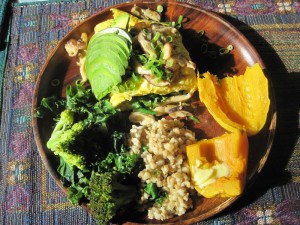 Many people believe that a ketogenic diet is the key to weight loss success, but keto by itself is not healthy long term for several reasons. This article by Dr. Joseph Mercola, based on his book, “Fat for Fuel,” explains why and stresses cyclical ketosis.
Many people believe that a ketogenic diet is the key to weight loss success, but keto by itself is not healthy long term for several reasons. This article by Dr. Joseph Mercola, based on his book, “Fat for Fuel,” explains why and stresses cyclical ketosis.
Basically, cyclical ketosis means that once your metabolism is fat-adapted (burning fats as it’s primary fuel) which can take anywhere from a few weeks to several months depending on the individual, that what’s healthiest long term is cycling in and out of ketosis. This is wonderfully balanced and practical, as it means eating healthy complex carbohydrates 2-3x per week, such as winter squash, various types of potato, yam, parsnip, carrot, and whole grains like brown rice, millet, buckwheat, quinoa, etc.
Recent studies are showing that nutrient cycling (cycling between higher and lower amounts of fat, net carbs and protein) and cycling between high and low calorie intakes (fasting and feasting) are foundational for optimal biological functioning.
Short periods of regular water fasting are part of Dr. Mercola’s cyclical protocol, but don’t let the idea of fasting deter you, as you’ll find that it isn’t difficult to do once your body is fat-adapted, as you won’t get hypoglycemic symptoms such as ravenous hunger, fatigue, shaky hands, edgy mood, and muscle weakness when fasting.
Dr. Mercola says, “…the ketogenic diet provides many of the same health benefits associated with intermittent fasting, and when done together, most people will experience significant improvements in their health — including not just weight loss, but other benefits such as: improved insulin sensitivity, which is key for preventing Type 2 diabetes and related diseases, increased muscle mass, reduced inflammation, reduced risk of cancer, and increased longevity.
Dr. Mercola highlights at least two significant reasons for the pulsed, cyclical keto approach:
• Insulin suppresses hepatic glucogenesis, i.e., the production of glucose by your liver. When insulin is chronically suppressed during long-term, ketosis (several months on end) your liver starts to compensate for the deficit by making more glucose. As a result, your blood sugar can begin to rise even though you’re not eating any carbohydrates.
In this situation, eating carbohydrates will actually lower your blood sugar, as the carbs will activate insulin, which will then suppress your liver’s production of glucose. Long-term chronic suppression of insulin is an unhealthy metabolic state that is easily avoidable by cycling in and out of keto.
• More importantly, many of the metabolic benefits associated with nutritional ketosis in general actually occur during the re-feeding phase. During the fasting phase, clearance of damaged cell and cell content occurs, but the actual rejuvenation process takes place during re-feeding. Cells and tissues are rebuilt and restored to a healthy state once your intake of net carbs increases.
Dr. Mercola’s Full Article: Why Intermittent Fasting Is More Effective Combined With Ketogenic Diet and How to Implement Cyclical Ketosis
Also, here’s Dr. John Douillard’s recent article: 10 Reasons to NOT Eat a Ketogenic Diet Long Term
by Courtney Coleman |
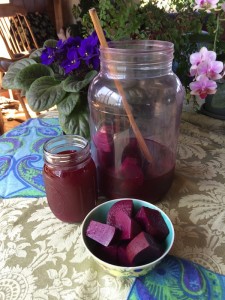 Beet Kvaas is an mineral supplement drink from the Russian tradition, and an AMAZING vitality tonic. After you read what’s next, you’ll wonder why everyone doesn’t have this awesome stuff in their fridge!
Beet Kvaas is an mineral supplement drink from the Russian tradition, and an AMAZING vitality tonic. After you read what’s next, you’ll wonder why everyone doesn’t have this awesome stuff in their fridge!
Just 4oz. of Kvaas AM & PM is a complete mineral supplement, probiotic, digestive aid, and liver/gallbladder cleanser. It also helps with disturbed cellular function, which we all have to some degree. It helps thin the bile and detox the body, it keeps the bowels moving regularly, and it builds healthy blood.
If you want to have it on hand continually, as I do, make a new batch about 10 days before you run out of your previous batch.
Okay. Here’s how: simply scrub & chop 3-4 large purple beets into large, 2 inch pieces (just quarter them so that they’ll sink to the bottom). Place the beets into a 1 gallon glass jar, fill almost to top w/filtered water and then stir in 1/2tsp whole sea salt, and either 1Tbsp whey from plain cultured yogurt, OR ½ wafer of lactic acid yeast by Standard Process brand, OR 1 cup kvaas from your previous batch.
Let this mixture sit covered, at room temperature in a dark place for 48hrs, then skim the bubbly stuff from the top (see photo below) w/a clean spoon (you don’t want to introduce any different bacteria), stir and refrigerate. After about 5 days in the fridge, it’ll become dark purple and lovely to drink. It’ll get darker and darker purple, and more and more tangy over the next two weeks. Stir it with a clean spoon before you drink it, as the minerals tend to sink.
Kvaas keeps for up to 2 months refrigerated, as long as the beets are beneath the level of the liquid. This process is anaerobic, so you can remove the beets as you drink it down (so that they don’t stick up above the level of the liquid), OR you can add another few cups of water then refrigerate for another week, OR you can start a whole new batch. Your next batch you can use the same beets, inoculate it with a cup or two from the previous batch of kvaas, so you don’t have to extract yogurt whey each time. Also, you can include fresh ginger, turmeric or burdock root scrubbed and chopped into large, 2 inch pieces that sink, for added medicinal benefit. Kvaas should taste slightly sour and effervescent (carbonated).
You can re-use these first beets for your second round of kvaas, but they should be eaten or discarded after this. Use fresh beets for the third round, and for every other round. Pay attention to the smell and taste, and if it tastes bitter or smells rotten, dump it and start a new batch using fresh yogurt whey or 1 cup kvaas from a good batch. This time be sure to sterilize all your tools & containers with anti-bacterial soap OR grapefruit seed extract.
*To get the whey out of a cup of yogurt, layer a dozen layers of cheese cloth or muslin inside a strainer basket and set it in a bowl not touching the bottom of the bowl. Dump the plain cultured yogurt (Brown Cow with cream top removed, or Nancy’s low fat work best for this) on top of the cheese cloth, and let the whey slowly drip down through the cloth into the bottom of the bowl, which takes about 1-2 hours.
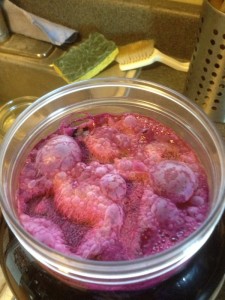
by Courtney Coleman |
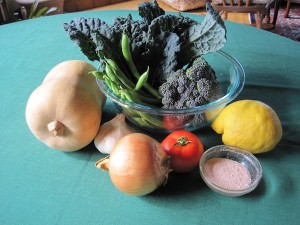 Back in the ‘90s, spirulina, bee pollen, and bee propolis were the kinds of foods termed “superfoods” because they’re the foods that have everything the body needs to thrive, so, theoretically, you could live on any of them, exclusively!
Back in the ‘90s, spirulina, bee pollen, and bee propolis were the kinds of foods termed “superfoods” because they’re the foods that have everything the body needs to thrive, so, theoretically, you could live on any of them, exclusively!
Then, foods like chia seeds, and whole grain amaranth and quinoa came on the scene as “superfoods” because of their super-high protein content.
Now we hear about foods with the widest spectrum of vitamins and minerals being superfoods like sweet potato, kale, and white mulberries.
Foods highest in omega 3 fatty acids have also been called superfoods, like flax seeds, hemp seeds, and krill oil.
And of course, there’s the most popular, current, superfood camp, which is all about the most antioxidants (cancer-fighters) like blueberries, goji berries, green tea, turmeric, and raw cacao.
Of course, it’d be ideal to get all of these foods into our bodies regularly, but life doesn’t usually unfold so conveniently, say, with affordable natural food stores on every corner.
But there’s hope! One of the most credible natural health gurus today, Dr. Joseph Mercola, lists several of the more common foods that we can get at most grocery stores and farmer’s markets, in certain combinations as “superfoods” because they synergistically maximize antioxidant potency and nutrient profile and nutrient assimilation. Awesome!
Here they are…You may want to keep these combinations in mind for your next recipe…
Broccoli + Tomatoes...When rats were fed diets containing 10 percent broccoli, they had a 42 percent decrease in the growth of prostate cancer tumors. When they were fed a diet containing 10 percent tomatoes, the growth rate dropped by 34 percent. But when the rats were fed a diet with 10 percent broccoli and 10 percent tomatoes combined, the tumor weights decreased by 52 percent!
Tomatoes + Olive Oil…Lycopene, a carotenoid antioxidant in vegetables like tomatoes, is one of the key reasons why tomatoes are so good for you. However, when you eat tomatoes with olive oil, the antioxidant activity of the lycopene is greatly increased.
Brussels Sprouts + Olive Oil…Brussels sprouts contain sulfur-containing compounds called glucosinolates, which your body uses to make isothiocyanates. These activate cancer-fighting enzyme systems in your body. Brussels sprouts have been linked to the prevention of a number of cancers, including colon cancer, ovarian cancer, and others. Brussels sprouts are also rich in vitamin K, with about 243 percent of the recommended daily value in one cup. Vitamin K is a fat-soluble nutrient, so eating Brussels sprouts along with a healthy fat like good quality virgin olive oil will help increase its absorption.
Raw Dark Chocolate + Apples w/the peel…Eating apples is associated with a lower risk of death from heart disease, an association that’s thought to be related to their content of antioxidant flavonoids, including the anti-inflammatory quercetin. Dark chocolate, which is rich in antioxidant catechins, has also been found to support heart health. When paired, dark chocolate and apples have been shown to help break up blood clots. For chocolate, the closer your cocoa is to its natural raw state (cacao), the higher its assimilate-able nutritional value.
Green Tea + Black Pepper…Black pepper contains a substance called piperine, which not only gives it its pungent flavor, but also blocks the formation of new fat cells. When combined with capsaicin in cayenne pepper, black pepper was also found to burn as many calories as taking a 20-minute walk. Brewed tea with garlic, ginger, and black pepper makes a perfect marinade for meats or seafoods.
Turmeric + Black Pepper…Turmeric contains curcumin, the polyphenol identified as its primary active component and which exhibits over 150 potentially therapeutic activities, which include antioxidant, anti-inflammatory, and anti-cancer properties. If you pair the turmeric with black pepper, it improves the bioavailability of curcumin by 1000 times! WOW!!
Kale + Almonds/Macadamias/Pecans…Just one cup of kale will flood your body with disease-fighting vitamins K, E, A, and C, along with respectable amounts of manganese, copper, B vitamins, fiber, calcium, and potassium. Vitamins K, E and A are fat-soluble, which is where the raw nuts come in to help ensure proper absorption. Also, a study revealed that a one-ounce serving of almonds has a similar amount of total polyphenols (antioxidants) as a cup of steamed broccoli or green tea.
Black Beans + Red Bell Pepper (or other iron foods with vitamin C foods such as cayenne or lemon juice)…Combining black beans or any iron-rich foods with a vitamin C-rich foods may increase the absorption of food state iron by six times!
Brown Rice + Almonds (or other calcium foods such as brazil nuts, cashews, and unhulled sesame seeds)…Brown rice is high in magnesium, which helps the body assimilate calcium. Food-state vitamins and minerals are by far the best way in which the body recognizes and utilizes these nutrients – the way in which nature intended them to benefit us. Chelated vitamins and minerals however, found in inexpensive supplements, actually do more harm to the body than good.
Wild-Caught Salmon + Collard Greens and/or Garlic…Vitamin D helps your body to absorb calcium. In fact, if you have a vitamin D deficiency, it can cause a defect in assimilating calcium into the collagen matrix in your skeleton, leading to aches and pains. Collard greens being rich in vitamin K and phytonutrients that may help lower oxidative stress, fight inflammation, and prevent cancer.
Here’s the link to Dr. Mercola’s original article, for more links to the sources of the research.

by Courtney Coleman |
Here’s a totally worthwhile, recent article by your favorite and mine, Dr. Joseph Mercola. In it, he shows us how intermittent fasting improves your immune system and mitochondrial function, reduces your inflammatory process, and reduces the amount of free radicals in your body. It is also dramatically helps to slow down the aging process, especially if you eat good fats as about 30% of your diet, and 50- 60% of your whole food diet as seasonal veggies & dark leafy greens.
www.mercola.com
Fasting Can Help You Live Longer…by Dr. Joseph Mercola
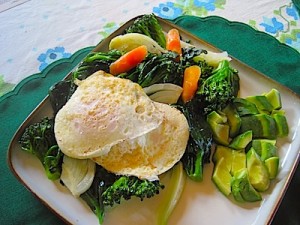
- Yum Dude!
“The types and quality of food you eat influences more than just how much you weigh. Food has an effect on your metabolism, insulin production, leptin release and a myriad of other hormonal and chemical balances. Scientists are also examining the way fasting affects cellular and mitochondrial function, and longevity.
They’ve found the cells in your body react to fasting in much the same way as they do to exercise. In other words, when placed under stress, be it exercise or fasting, the reaction creates changes at the cellular level that helps extend your lifespan.
“For starters, fasting shifts your body from using glucose as its primary fuel to fat, and being an efficient fat-burner benefits your health beyond weight loss.
Although much of the research is on fasting or intermittent fasting, the newer term is sometimes referred to as TRF (Time Restricted Feeding) which promotes eating only in a narrow window of each day, typically 6-8 hours.
Efficient Fat Burning Promotes Health
“Fat is a far cleaner burning fuel than carbohydrates and generates far less free radicals. Glucose is an inherently “dirty” fuel as it generates far more reactive oxygen species (ROS) than fat. But to burn fat, your cells must be healthy and normal. Cancer cells, for example, cannot burn fat, and this why a healthy high fat diet appears to be such an effective anti-cancer strategy.
“We’re now starting to realize that mitochondrial dysfunction is at the core of virtually all diseases, and nutritional intervention — not only what you eat, but also when, and how often — is of key importance.
“To summarize, mitochondrial health is promoted by eating real food; avoiding food at least 3 hours before bedtime; and intermittently fasting.
What Happens When You Fast?
“Fasting is a biological stressor with several amazing health benefits, including normalizing your insulin and leptin sensitivity, promoting human growth hormone (HGH) production, reducing oxidative stress and lowering triglyceride levels.
“And now a team of researchers from the University of Southern California believe they have discovered yet another benefit: The regeneration of stem cells.
“During the initial 14-16 hours of not eating, your body burns through almost all of your carb (glycogen) stores in your muscles and liver. Once those glycogen stores have been depleted, your body turns to fat stores for energy. Intermittent fasting teaches your body to efficiently burn fat for fuel.
Intermittent Fasting Can Help Regenerate Your Entire Immune System
“In an adult, the undifferentiated stem cells found in tissues and organs are used by the body to renew itself. The primary role of these cells is to maintain and repair the tissues where they are found.
“Another effect of fasting is autophagy. When this vital process occurs in the mitochondria it is called mitophagy. This is when your body begins to eat itself in an orderly pattern to remove damage parts from your body.
“Although it sounds like something you’d want to avoid, this particular process is healthy and helps your body to “clean house.” According to Colin Champ, M.D. and certified radiation oncologist at the University of Pittsburgh Medical Center: “Think of it as our body’s innate recycling program. Autophagy makes us more efficient machines to get rid of faulty parts, stop cancerous growths, and stop metabolic dysfunction like obesity and diabetes.”
“Mitophagy happens at the cellular level where the membranes break down and your body recycles what’s healthy and uses the rest for energy, or to make new parts. This process may also play a role in controlling the amount of inflammation in your body. When scientists engineered rats incapable of autophagy they grew up sleepier, fatter, with higher cholesterol levels and impaired brains.
Three Strategies That Promote Mitophagy and Cellular Regeneration
“There are three ways to elevate your body’s ability to destroy worn out cells and regenerate new ones. The first is exercise, which puts stress on your body, tears down muscle, and helps your body to rebuild new tissue.
“A highly effective way to boost mitophagy is intermittent fasting. Some studies even suggest intermittent fasting can improve cognitive function, brain structure, and help you to learn more easily. These studies were completed on rats and it wasn’t totally clear if the benefits resulted specifically from autophagy.
“Yet another way to mimic mitophagy is to use a high fat diet consisting mainly of high quality healthy fats with a moderate amount of high quality protein and minimal non-fiber carbohydrates in the ratio. The idea is to reduce your carbohydrate intake to a level that your body has no other choice but to burn fat for fuel.
“Research demonstrates this diet will help your body fight cancer, lower your risk of diabetes, fight some brain disorders, and can reduce seizure activity in 50 percent of children on the diet by at least 50 percent.
“Keep in mind that monitoring your protein intake is just as important as cutting non-vegetable carbs. If you eat more protein than what your body needs, you will prevent the activation of pathways associated with stem cell and immune system regeneration. This includes the mTOR, PKA, and IGF pathways.
Timing Your Meals Right Can Cut Free Radical Damage
“There is compelling evidence that when cells are supplied with fuel when fuel is not needed, the cells leak electrons that react with oxygen, producing free radicals. Free radicals are responsible for damage to your cells, DNA, and have been linked with an increased potential for illness and disease.
“The best way to reduce free radical damage is not to take antioxidants but to make sure you are burning a clean fuel like fat and not carbs. However, when your caloric intake is greater than necessary, and especially when consumed at a time when you have low energy needs, like when you are sleeping, it increases the number of free radicals produced.
“Studies have demonstrated the link between free radicals and mitochondrial DNA damage, which is then responsible for producing nuclear damage that can result in cancer. In a study from France, researchers demonstrated in a mice model that intermittent fasting in mice with lymphoma reduced the amount of free radical, increased their longevity and reduced the death rate.
“This is also why I recommend not eating at least 3 hours before bedtime. Your body will use the least amount of calories when sleeping, so the last thing you need is excess fuel at this time, as it will generate excessive free radicals that can damage tissues, accelerate aging, and contribute to chronic disease.
“Personally I stop eating around 4 – 5 PM, but this time varies depending on what my blood sugars are running. My goal is to have a fasting blood sugar below 60, but certainly below 70.
I personally strongly disagree with fasts much longer than 18 hours as it will drive most people into burning lean muscle mass for fuel. This is why I recommend 16-18 hours of fasting each day and eating all of your calories in the remaining six to eight hours. This reduces your body’s dependence on carbohydrates and glycogen on a daily basis. Research has demonstrated a lowered cancer risk and improved weight management in both humans and animals.
How to Support Intermittent Fasting
“Intermittent fasting is healthy for most people. However, if you suffer from diabetes, hypoglycemia, chronic adrenal stress, or cortisol dysregulation, you must take specific precautions and work with your physician and dietitian to ensure healthy balance of nutrition and fasting. Pregnant and nursing mothers should not fast as their babies need the nutrition to grow and develop appropriately.
“Adding this type of fasting to your health regimen may be challenging but the rewards are significant. Begin by using a fasting schedule you think you can maintain. Don’t get discouraged if you eat more on your fasting days than you had planned. Drink plenty of water and tea to help feel full and satisfied during the day.
“Get support from friends or relatives. Starting a program with someone else, especially in the same house, will give you an accountability partner with whom you can share tips that work for you. When you know that someone else is counting on you to walk this journey with them, you’re less likely to eat more than you planned.
To sum it all up…
“Intermittent fasting improves your immune system and mitochondrial function, reduces your inflammatory process and the amount of free radicals in your body. It is also dramatically helps to slow down the aging process, especially if you eat good fats as 30-40% of your diet, and 60% of your whole food diet as seasonal veggies & dark leafy greens. In other words, going without food now and then is not going to kill you — on the contrary, it may be one of the keys to living a longer and healthier life.”
Thanks Dr. Mercola!
Excepts from this article, published on June 14, 2014, is titled:
“How Intermittent Fasting Can Help You Live Healthier, Longer”
and is brought to you by Dr. Mercola, a New York Times bestselling author.
For more helpful articles, please visit Mercola.com today and receive your FREE Take Control of Your Health E-book!

by Courtney Coleman |
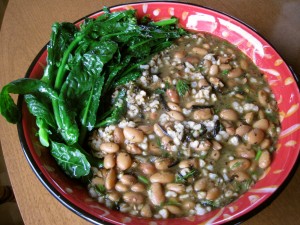 Bitter Greens such as kales, collard greens, arugula, mustard greens, and dandelion greens, are not only amazing nutritional powerhouses, but they aid digestion, reduce sugar cravings, help metabolize fats, and work many other magical effects on the human body.
Bitter Greens such as kales, collard greens, arugula, mustard greens, and dandelion greens, are not only amazing nutritional powerhouses, but they aid digestion, reduce sugar cravings, help metabolize fats, and work many other magical effects on the human body.
Half a plateful of steaming kale is what I believe is missing alongside our proteins, unrefined carbohydrates, and good fats everyday in this modern world of fast food & packaged food…especially alongside rich holiday meals! Rural Asian and Indian people who experience vital health late into life, eat diets of 60-70% seasonal vegetables, and one person commonly eats an entire bunch of bitter greens daily.
Bitter greens help cleanse and tonify (strengthen) the liver and gallbladder by pushing bile out of the gallbladder and into the stomach. This action aids in the digestion of fats and proteins, especially high-purine proteins like meats. Bitter greens also act as a gentle diuretic to purify the blood and thusly help cleanse the entire body, which often leads to weight loss, clear skin, normal bowel function, and lower blood pressure. Along with all these wonderful effects, bitter greens also provide us with a wide scope of bio-available minerals (especially iron), they help lower our serum cholesterol, and they greatly reduce acid indigestion and gas buildup.
LIST OF BITTER GREENS
All Kales & broccoli family dark leafy greens (always steam or cook at least lightly)
Amaranth greens
Arugula
Beet Greens, Spinach, & Swiss Chard (always eat raw instead of cooked)
Endive
Broccoli Rabe
Dandelion Greens
Escarole
Frisée
Mizuna
Mustard Greens
Turnip & Radish Greens
Nettles
Radicchio
Rapini
Rucola
Tatsoi
Watercress
To counter the bitter taste, try lightly sautéing greens with a small amount of salt and good fat. Adding unrefined salt and high quality fat like virgin coconut oil when cooking reduces bitterness, enhances digestibility, and even releases nutrients for easy mineral absorption. Also, as a general rule of cooking, the sweet flavor balances the bitter flavor, so cook them or serve them mixed with bite size pieces of carrot, yam or winter squash.
RECIPE: Steamed Veggies & Dark Leafy Greens
In a deep, medium sized stainless steel saucepan, place a fitting steamer basket and about 2 cups of water in the bottom. Wash and slice about 2 cups of any sweet veggies like carrot, yam, fennel bulb, or winter squash into 1/4 inch pieces. Place the sweet veggies in the bottom of the steamer basket, and steam for about 3 minutes until almost tender. Next, add about 2 cups any medium-dense veggies like broccoli, fresh green bean, bok choy, or cauliflower, etc. and steam for another 2 minutes. Lastly, stuff big handfuls of washed & chopped kale, collards, or any cruciferous greens on top of the other veggies, cover again, and steam for another minute. Uncover to make sure all greens are slightly wilted and wet-looking. Steam another 30 seconds if not. Remove lid immediately, and carefully (so you don’t burn your hands with the steam) turn all the veggies out onto a plate. Drizzle everything with lemon juice and a high-quality virgin olive oil. Voila! After you eat this with your heavy holiday meals, or with your meats or eggs or brown rice/beans/avocado, you’ll feel invincible all year long!
Here’s some salad dressing ideas which are great for the kinds of bitter greens which should be eaten raw due to the oxalic acid content like spinach, beet greens, & Swiss chard.
Sweet Fennel Salad…2 cups each: chopped celery, grated carrot, and sliced fennel bulb. Add 3 cups each chopped arugula and spinach, and toss.
Balsamic Vinaigrette Dressing…3Tbsp olive oil, 3Tbsp balsamic vinegar, 2Tbsp lemon juice, and 1tsp grade B maple syrup or raw honey.
Italian Salad Dressing…Making this dressing is so simple – it just depends on your preference for each ingredient. You can make it extra lemony or extra herby if you like. Here’s the basics: 3Tbsp good quality virgin olive oil, 1Tbsp lemon juice OR raw apple cider vinegar and finely minced fresh herbs of choice (marjoram, sage, rosemary, parsley, dill, fennel, etc).
Good Quality, Extra Virgin Olive Oil drizzled over salad with a squeeze of Meyer Lemon Juice is simple & tastes fantastic!
For a No-Sugar, but Pleasantly Sweet Dressing…3Tbsp olive oil, 1 Tbsp raw apple cider vinegar, and 5 drops Nu Naturals brand vanilla stevia.
 Many people believe that a ketogenic diet is the key to weight loss success, but keto by itself is not healthy long term for several reasons. This article by Dr. Joseph Mercola, based on his book, “Fat for Fuel,” explains why and stresses cyclical ketosis.
Many people believe that a ketogenic diet is the key to weight loss success, but keto by itself is not healthy long term for several reasons. This article by Dr. Joseph Mercola, based on his book, “Fat for Fuel,” explains why and stresses cyclical ketosis.





